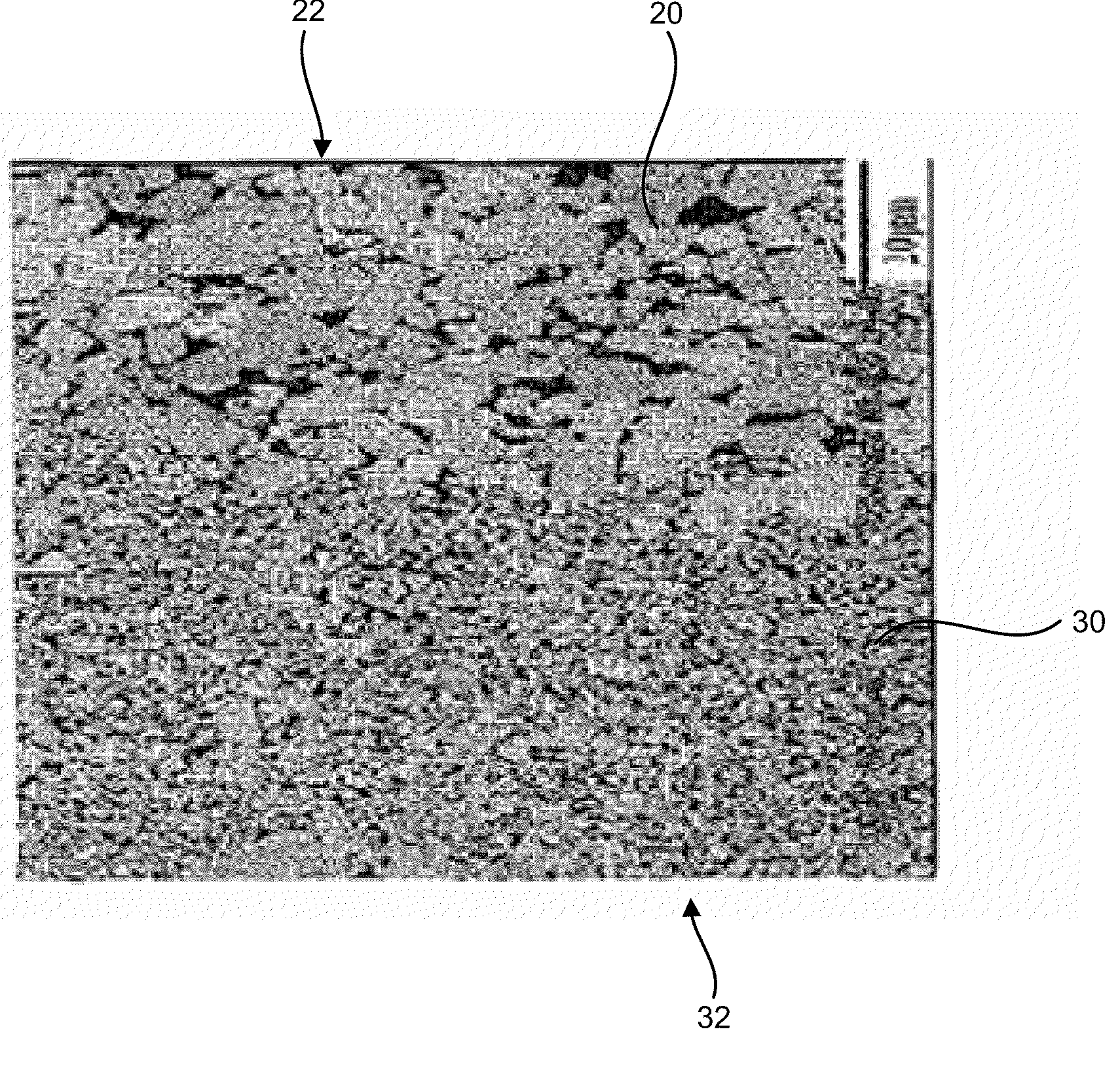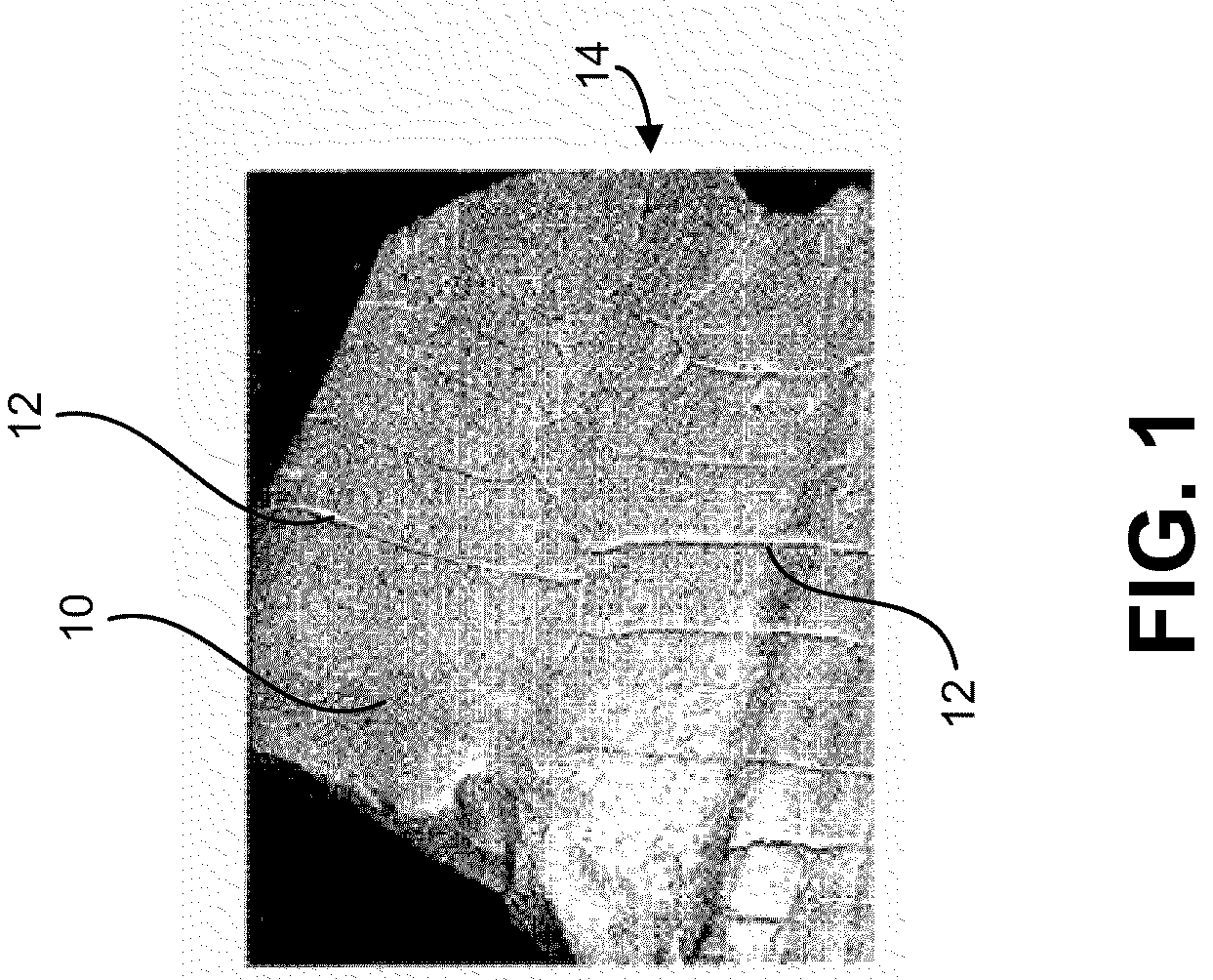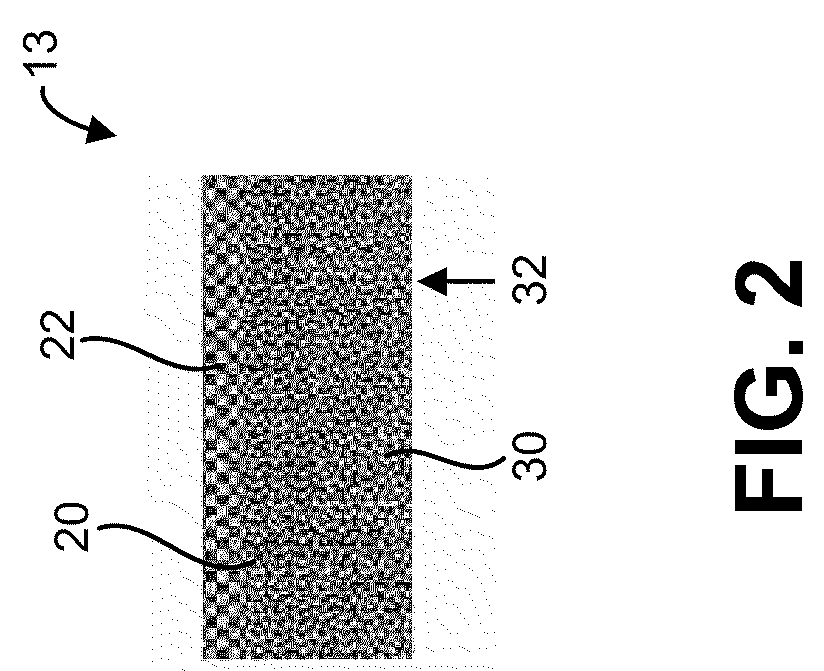Thermal degradation and crack resistant functionally graded cemented tungsten carbide and polycrystalline diamond
a cemented tungsten carbide and functional grade technology, applied in the field of thermal degradation and crack resistance functional graded cemented tungsten carbide and polycrystalline diamond, can solve the problems of limiting the effectiveness of some potential applications, low fracture toughness of materials, and easy cracking of materials, so as to improve the thermal conductivity of materials, avoid heat cracking and/or thermal fatigue, easy to dissipate frictional heat
- Summary
- Abstract
- Description
- Claims
- Application Information
AI Technical Summary
Benefits of technology
Problems solved by technology
Method used
Image
Examples
Embodiment Construction
[0018]The embodiments of the present invention will be best understood by reference to the drawings, wherein like parts are designated by like numerals throughout. It will be readily understood that the components of the present invention, as generally described and illustrated in the figures herein, could be arranged and designed in a wide variety of different configurations. Thus, the following more detailed description of the embodiments of the present invention, as represented in the Figures, is not intended to limit the scope of the invention, as claimed, but is merely representative of embodiments of the invention.
[0019]The present embodiments involves the understanding of how the conductivity and mechanical properties of WC—Co and PCD materials may be affected by the composition (i.e., amount of cobalt) and the microstructure (i.e., the grain size of the particles) of the material. This relationship is described herein.
[0020]The thermal conductivity of WC—Co or polycrystallin...
PUM
| Property | Measurement | Unit |
|---|---|---|
| size | aaaaa | aaaaa |
| size | aaaaa | aaaaa |
| thickness | aaaaa | aaaaa |
Abstract
Description
Claims
Application Information
 Login to View More
Login to View More - R&D
- Intellectual Property
- Life Sciences
- Materials
- Tech Scout
- Unparalleled Data Quality
- Higher Quality Content
- 60% Fewer Hallucinations
Browse by: Latest US Patents, China's latest patents, Technical Efficacy Thesaurus, Application Domain, Technology Topic, Popular Technical Reports.
© 2025 PatSnap. All rights reserved.Legal|Privacy policy|Modern Slavery Act Transparency Statement|Sitemap|About US| Contact US: help@patsnap.com



